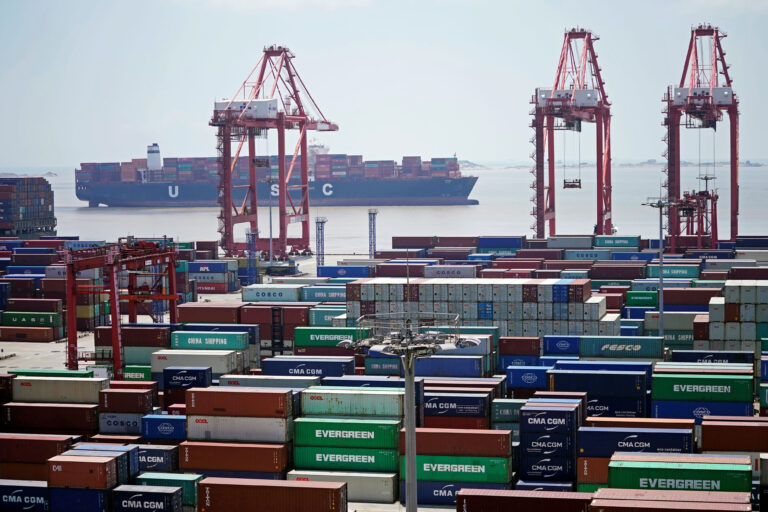A container placed at Yangshan Port in Shanghai, China on August 6, 2019.
Ally Song | Reuters
BEIJING—Exports rose in line with expectations and imports surged more than expected in April, data released by China’s customs authorities on Thursday showed.
China’s imports from the United States, European Union and Russia rose last month even as exports to all three countries fell, according to CNBC’s official data calculations.
Globally, China’s exports rose 1.5% year-on-year in US dollar terms in April, while imports rose 8.4%, according to the data.
According to a Reuters survey, exports were expected to increase by 1.5% from the previous year, while imports were expected to increase by 4.8%.
In March, both imports and exports decreased compared to the same month last year.
China’s imports from the United States rose 9% in April from a year earlier, but exports fell nearly 3%.
The United States remains China’s largest trading partner on a single country basis, and the Association of Southeast Asian Nations remains China’s largest trading partner on a regional basis.
In April, China’s exports to ASEAN increased by 8% year-on-year, while imports increased by 5%.
China’s exports to the EU decreased by about 3.5%, but imports increased by nearly 2.5%.
This data shows an increase in imports and exports to Vietnam, but no such data was available for Mexico.
According to data, China’s integrated circuit imports and exports increased year-on-year in April.
On a volume basis, China’s exports of automobiles, LCD panel displays, and home appliances increased, while exports of mobile phones decreased slightly. Ship exports also decreased.
China’s imports of crude oil and natural gas increased, as did imports of steel, plastics, pharmaceuticals, and automatic data processing machinery and parts. Imports of cosmetics decreased.
Weak domestic demand weighs on imports, while exports are under some pressure due to a slowdown in global demand and tensions with the United States, China’s biggest trading partner.
The Biden administration is calling for tariffs on Chinese steel to be tripled. Former President Donald Trump said he would raise tariffs on Chinese goods by 60% if re-elected this fall.
The COVID-19 pandemic has also prompted multinational companies to diversify their supply chains from relying solely on China.
However, Nomura analysts said in a report earlier this month that much of the diverted trade is still likely to originate in China or in factories in other countries where China has invested.
“Excluding China, the U.S. global trade deficit continues to increase and is near record highs,” the report said.
“If the United States truly wants to reduce its trade deficit through tariffs, it needs to raise tariffs on all U.S. imports,” the report said. “President Trump’s recent 10% ‘national ring’ initiative should not be dismissed lightly.”

